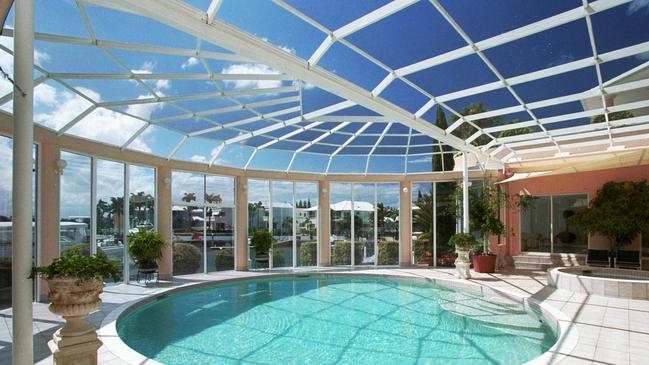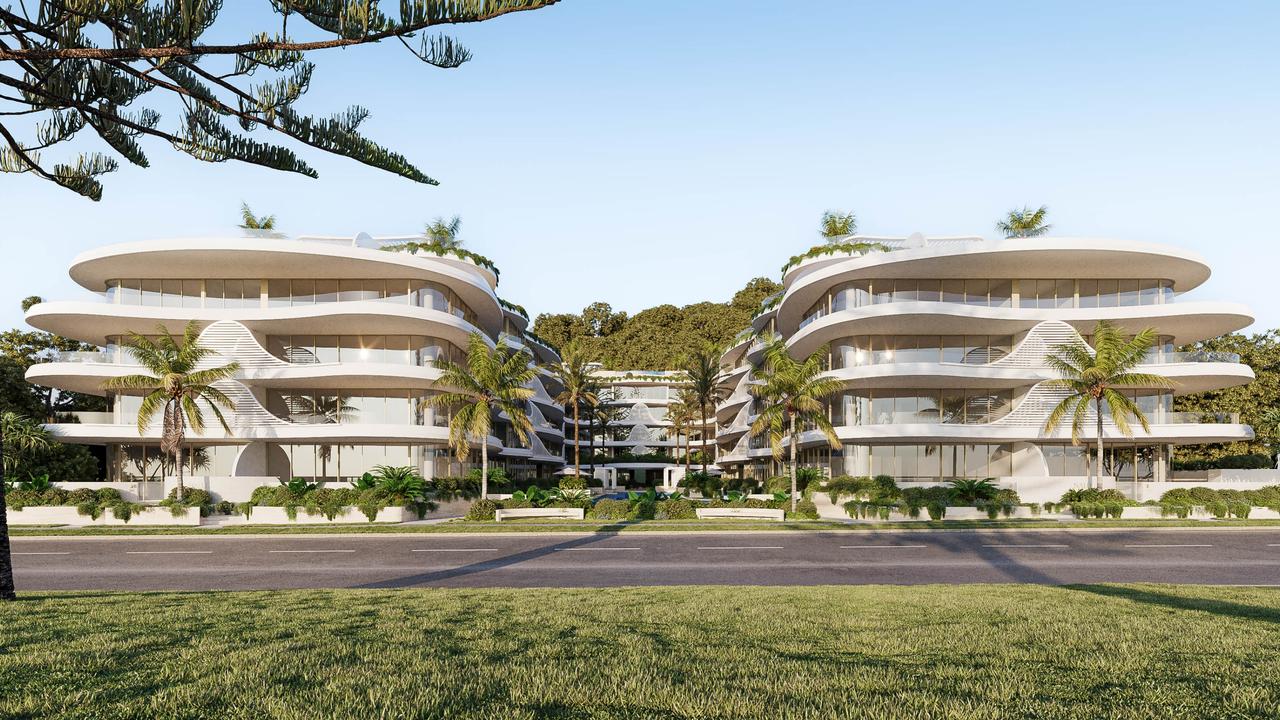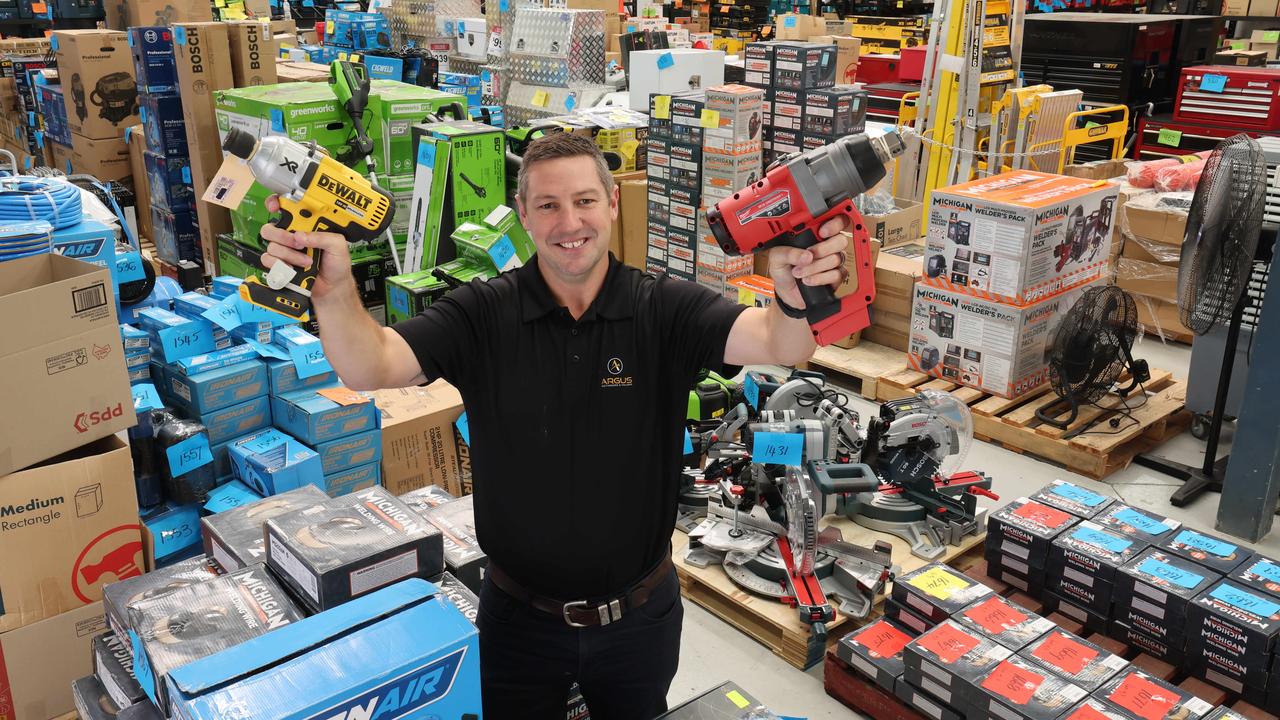Sovereign Islands: Truth about Gold Coast’s most exclusive suburb which is home to billionaires
The Sovereign Islands is the Gold Coast’s most exclusive suburb and home to billionaires, millionaires, mansions and infinity pools. But things can go sour in a big way. This is what really went down.
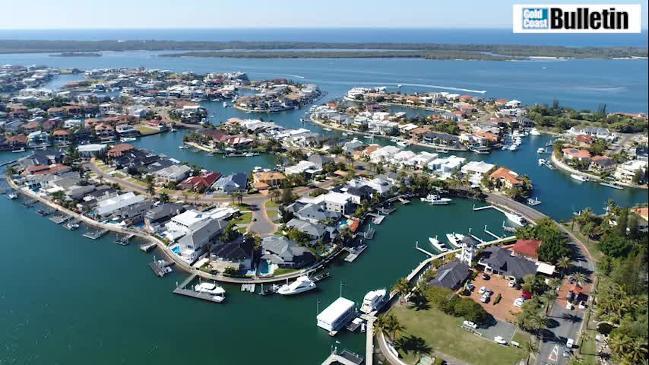
Business
Don't miss out on the headlines from Business. Followed categories will be added to My News.
MILLIONAIRES, mansions and infinity pools – The Sovereign Islands has more than earned its title as the Gold Coast’s most exclusive suburb.
From Clive Palmer to motor-racing legend Dick Johnson, some of the state’s most famous faces have called it home in the 36 years since the subdivision was first proposed.
TRUTH ABOUT LIVING ON GOLD COAST’S HEDGES AVE
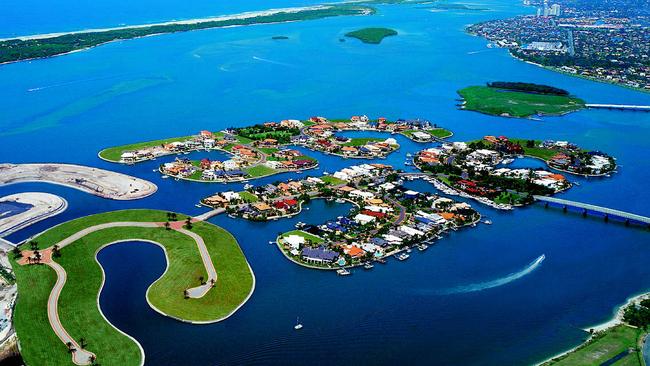
In the first of a two-part series, we reveal how this sand island was transformed into what was described as “Australia’s most prestigious, private and secure residential address”.
The Gold Coast has a long history of exclusive enclaves, going more than 50 years to the creation of Cronin Island.
Connected by a bridge to Chevron Island, Cronin was at one time the city’s hottest address, with its properties breaking real estate records.
Hedges Ave at Mermaid Beach became the go-to street for prestige and status by the early 1980s.

FULL LIST: WHO OWNS HEDGES AVE BEACHFRONT
While Hedges remained the Gold Coast’s most famous street, The Sovereign Islands would go on to take the title as our most exclusive suburb by the mid-1990s when the first of its giant mansions were built.
It was originally known as Andy’s and Griffin Island, though the reasons for this name are a mystery.
Talk of developing the sand island occurred as early as 1974 when Hansard records show it was the subject of a fiery debate between then-Albert MP Bill D’Arcy and Land Minister Wally Rae.
REVEALED: TRUTH ABOUT $1.4B JEWEL DEVELOPMENT
But there was no movement on building on the island for more than a decade until it was bought by developer Lewis Land Corporation.
By late 1985 Lewis had spent $2.5m building the bridge connecting the island to Paradise Point after securing a deal with the Gold Coast City Council.
Even by this point, the area was being marketed as the future location of an exclusive suburb.
Alderman Chris Gibbs said he expected the land to sell for significant sums.
FULL DIGITAL ACCESS: JUST $1 FOR FIRST 12 WEEKS
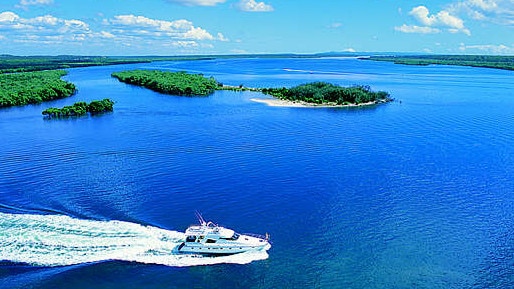
“There is 40ha of Residential A land, and you’d be flat out getting more than seven allotments per hectare on a canal development,’’ he said.
“So I would expect there would be about 280 blocks. I’ve no doubt, with the amount of money they’re spending, the blocks will cost $200,000 and upwards.’’
Lewis announced in January 1986 it would rename the area Sovereign Islands and unveiled plans for a $100m residential development.
It was named for Sovereign, the maxi yacht owned by the company’s boss, Sydney businessman and yachtsman Bernard Lewis.
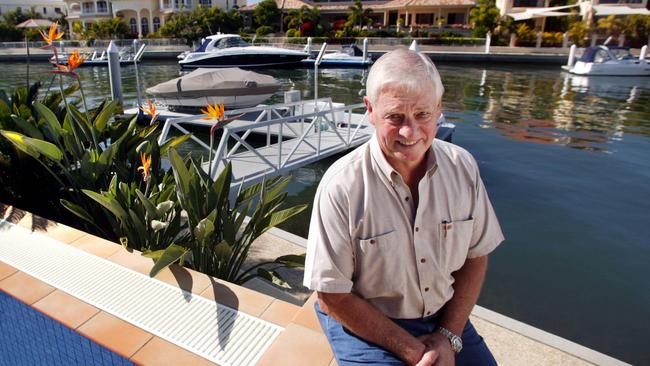
It was described at the time as “the Gold Coast’s most exclusive water-based community”.
The proposal immediately attracted controversy. The Paradise Point and Northern Districts Progress Association argued it would deprive the public access and that Premier Sir Joh Bjelke-Petersen’s government had sold the Crown land too cheaply.
“If the government is determined not to retain Crown land on the island, it could obtain a far better return by public auction with an upset price of $225,000, which would immediately remove implications of collusion and selective treatment,’’ association secretary Jack Oberthur said at the time.
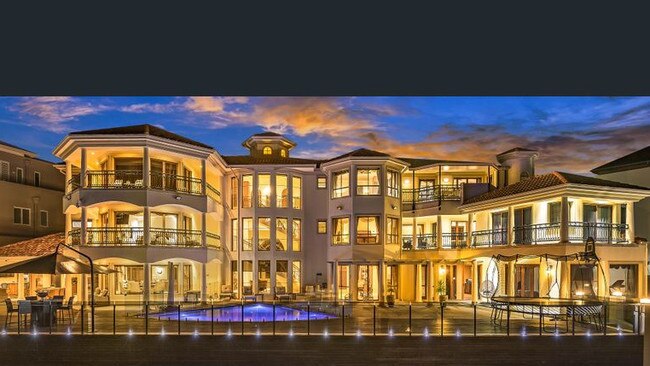
Ald Gibbs argued the deal was struck to stop high-rise development and a possible island population of 20,000 people.
Gold Coast Mayor Denis Pie argued it was right that the public should be denied access to the island.
“People don’t buy a house to have other people wandering through it all the time, so of course the area will be off limits to the public in many areas,’’ he said in 1986.
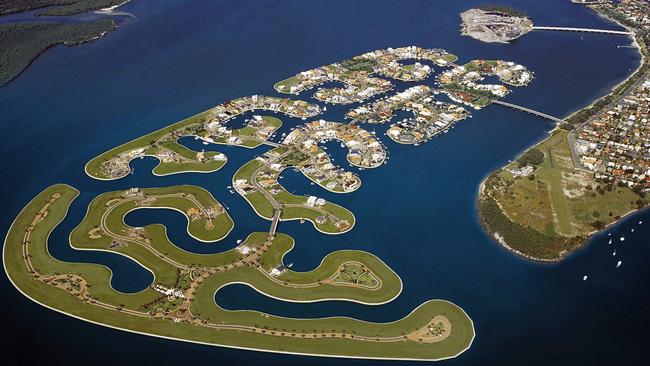
“The developers had initially planned a multiple high-rise development until we agreed to rezone the area to Residential A. So what are people really complaining about now? The basic right of other people to buy and own their own home? That’s just ridiculous.”
By mid-1987 Lewis unveiled a dramatic expansion of the project from 60ha to 110ha by pumping up sand from the Broadwater.
The move would have created at least a further 100 exclusive residential blocks worth about $25m.
The plan was to have been a joint venture with a state government group, the Gold Coast Waterways Authority.
In January that year, the waterways authority applied to the Land Administration Commission for a special development lease over the sandbank extension.
It said it would require payment of 15 per cent of the gross sale price of each lot.
But the council objected to the proposal and voted it down because it would lead to further destruction of the Broadwater and to too many people living on the island.
“We emphatically disapproved,’’ council planning boss Lex Bell said.
What really happened inside Coast’s ultra-exclusive enclave
THE creation of the Sovereign Islands was a watershed moment for the Gold Coast’s north, as it was the first suburb aimed entirely at the luxury market.
From the day it was proposed in the mid-1980s, the Paradise Point mega development was awash in money and big dreams: an ultra-exclusive enclave with some of the nation’s most astonishing houses, all of which carry eye-watering price tags.
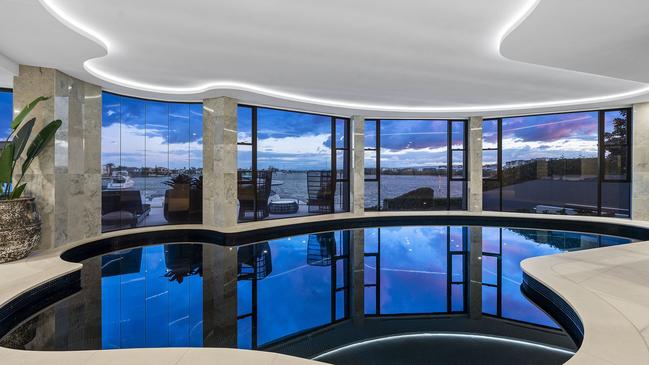
The first house built on the former sand island in mid-1988 was expected to fetch more than $1.6m.
That was a substantial price tag at the time, with Hedges Ave, the Gold Coast famous Millionaire’s Row, not recording prices of that size until 2000.
By mid-1989, construction was completed on the area’s village centre, including a 15m observation tower overlooking the Broadwater and a 35-berth marina.
But even as it took shape, the development remained highly controversial with local residents inundating local Alderman Alan Rickard with complaints.
Ald Rickard himself was opposed to the project and said Sovereign Islands would reduce by a third the area of the Broadwater.
“I believe the Broadwater is like a public park and should be treated as such,’’ he said in 1989, adding that he was saddened that the Sovereign Islands, formerly known as Andy’s and Griffin Island, had turned the area into a construction zone.

But these protests amounted to nothing and sales continued apace at the dawn of the 1990s when more than $18m of property had already changed hands.
In mid-1990 alone Lewis Land Corporation (LLC) sold $4.4m worth of stock in just 10 weeks.
Sales records continued to tumble as a Swiss businessman spent $2.5m on a block of land.
But, like the rest of the Gold Coast, the Sovereign Islands was hit hard by the early 1990s recession and LLC hit the pause button on the project and held off new sales or construction.
The neighbouring Ephraim Island project was also hit hard, with Japanese company Alpha Corporation losing more than $50m after being forced to sell it.
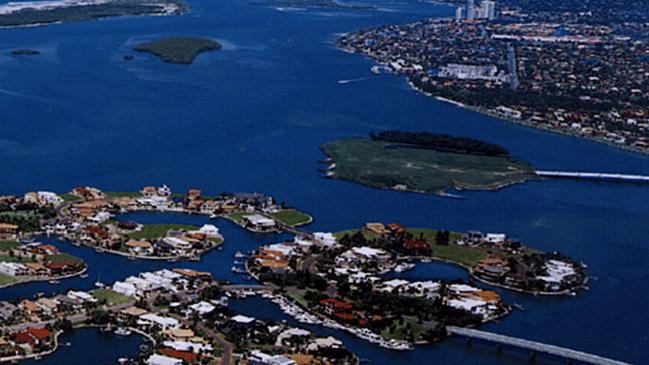
Once envisaged as an equally decadent location, it spent the early 1990s regarded as “one of the greatest follies on the Gold Coast” because the only element to be completed was “a bridge to nowhere”.
“Once a natural setting for mangroves and birdlife Ephraim Island is now little more than a cleared piece of land in the middle of the Broadwater,” News Corp reported at the time.
“The bridge was built in the late 1980s but since then has stood as a lonely testament to developments on the Gold Coast that went sour and the huge amounts of money spent that have left what appear to be tourism follies.”
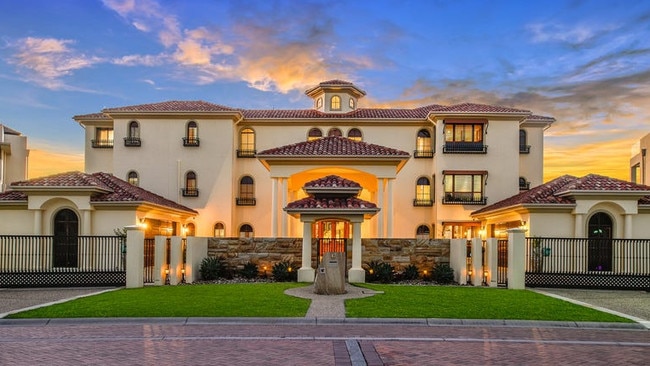
Favourable economic conditions returned by late 1994 and LLC took Sovereign Islands back to market, releasing more than $10m worth of land, space for 131 homes.
By the dawn of the Millennium the Sovereign Islands had become one of the state’s most sought-after address, with one mansion going on the market for $8m.

Overseas buyers particularly were focused on the area, though the early 2000s saw several famous faces make it their home, including billionaire businessman Clive Palmer, motorsports legend Dick Johnson and conman Peter Foster all moving in.
By 2001, more than $86m had been spent on property on the island in a decade.
While the area was notching up sales records, construction continued on the remaining stages of the project throughout the 2000s.
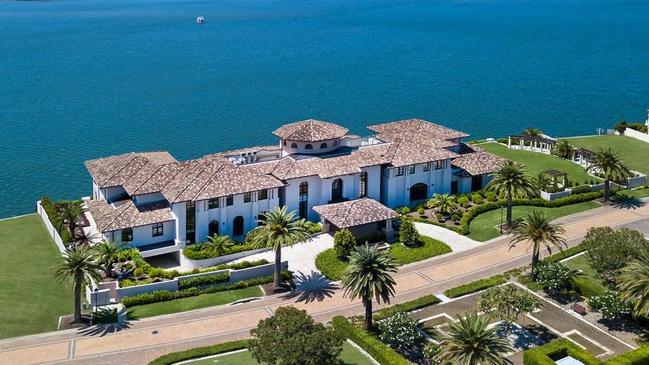
Among the most notable mansions on the island was 26 Knightsbridge Parade East, a giant six-bedroom “super mansion” that had been on track to be completed by 2010. Then the global financial crisis hit and it sat there unfinished for almost a decade.
It was made famous when it sold in an unfinished state for $5.3m by Perth engineer Ric Rizzi at a mortgagee auction in 2013.
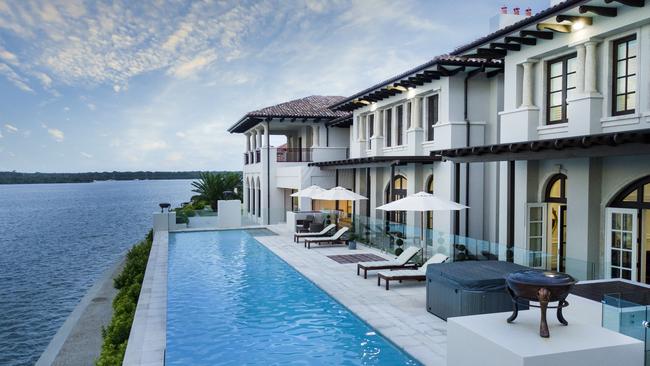
The price was considered a bargain after the previous owners, accountant Clare Marks and her lawyer husband Scott Tyne, outlaid $21.44m on the initial construction and four blocks of land.
The pair were evicted after court action in Australia and Singapore following defaulted payments to the tune of more than $11m.
Now complete, it was put on the market in 2019 for $45m.
With the Gold Coast’s real estate market booming once again, Sovereign Islands are again back in the spotlight, as cashed-up buyers snap up the few remaining blocks of land.


